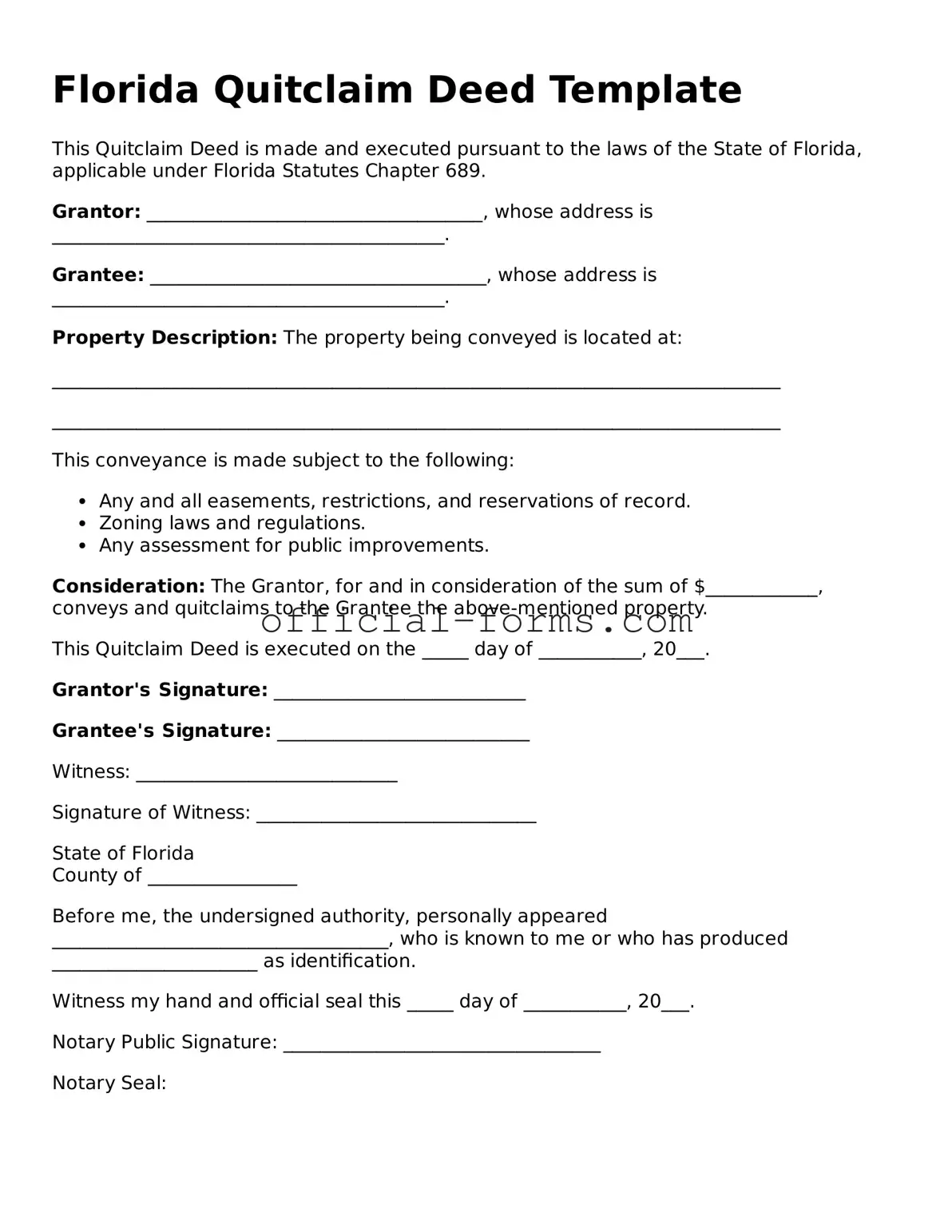Official Florida Quitclaim Deed Document
A Florida Quitclaim Deed is a legal document used to transfer ownership of real estate from one party to another without any warranties regarding the property’s title. This form is often utilized in situations such as family transfers, divorce settlements, or when the grantor is uncertain about the property’s title status. By executing this deed, the grantor relinquishes any claim to the property, allowing the grantee to assume ownership.
Open My Quitclaim Deed Now
